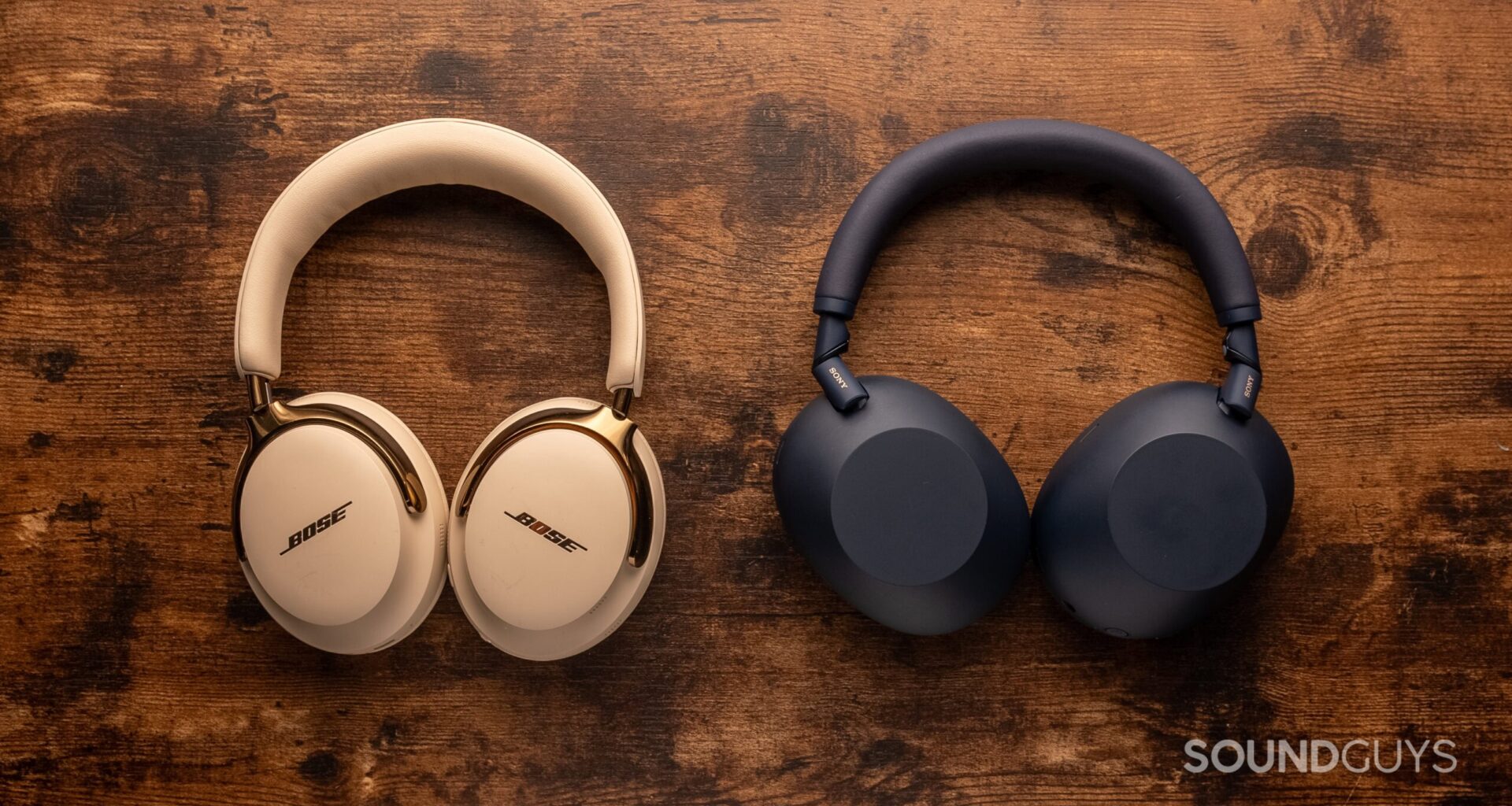Bose finally released its latest flagship active noise canceling (ANC) headphones, allowing the perennial title fight between it and Sony for consumers’ attention in the space. So who wins when we pit the Bose QuietComfort Ultra (2nd Gen.) vs. Sony WH-1000XM6? That depends on what you want out of a set of headphones, so let’s get into it.
How has this article been updated?
This article was originally published on October 4, 2025, and this is the first version.
What’s it like to use the Bose QuietComfort Ultra (2nd Gen.) compared to the Sony WH-1000XM6?
As these are the top-of-the-line when it comes to contemporary ANC headphones, both the Bose QuietComfort Ultra (2nd Gen.) and Sony WH-1000XM6 represent some of the best experiences you can get with that category. Each set of headphones is designed around maximizing comfort and ANC performance over a long period of time. Both headphones can be folded up for easier storage, and both come with an airplane-friendly travel case that can stow the included cables.
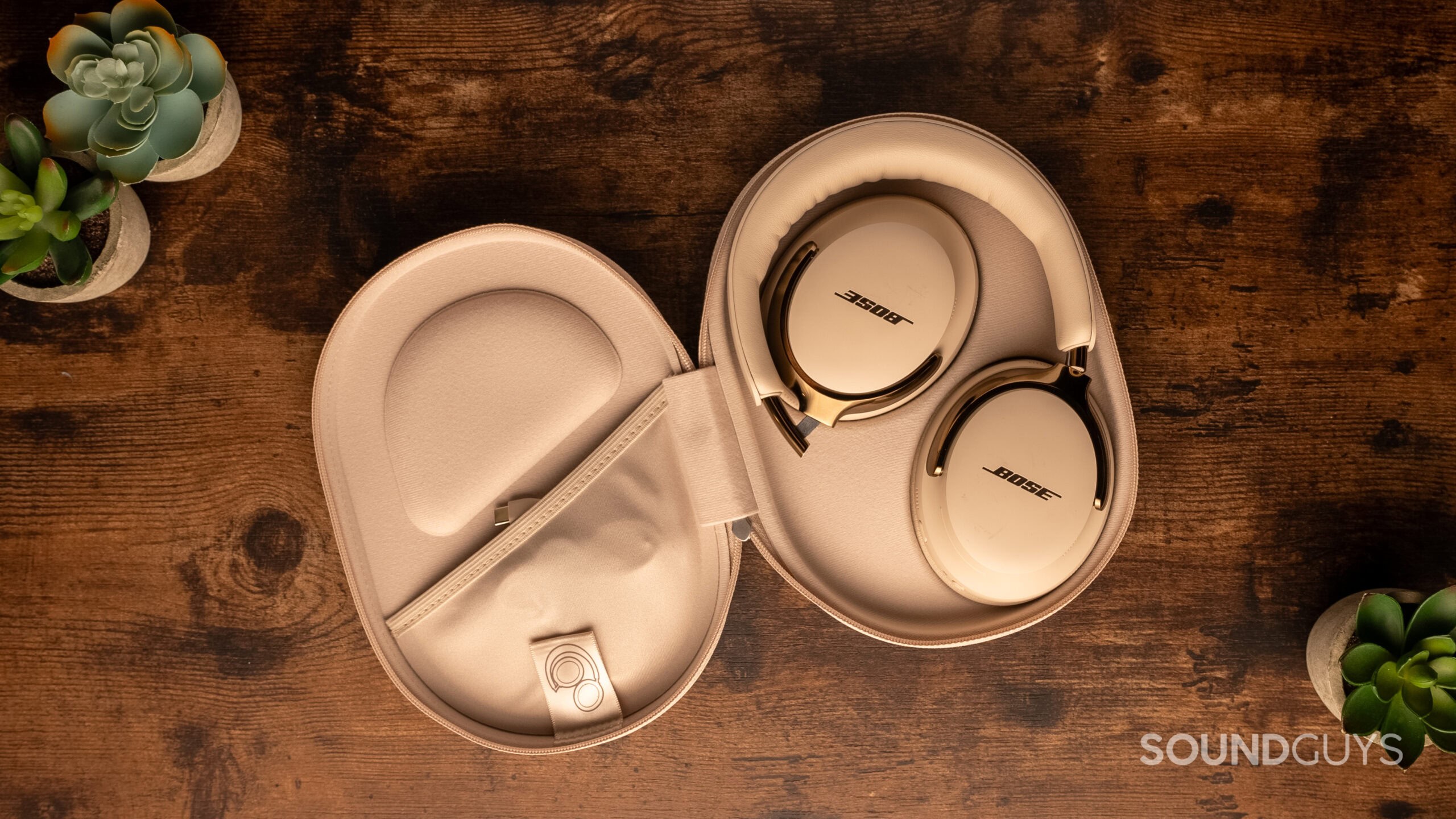
The travel cases of both headphones allow for a lay-flat storage option.
There are some differences with each design, as the Bose QuietComfort Ultra (2nd Gen.) has a much more traditional headphone design, and is much more aesthetically-pleasing than the Sony WH-1000XM6. The Sony WH-1000XM6, on the other hand, is extremely utilitarian and leans into that ethos wherever possible. Consequently, there are some design choices with the Sony WH-1000XM6 that might annoy you — like the lip encircling the padding, or the heat build up due to the less-breathable pads. Neither one of these headphones has any major issues for people with long hair, or sensitivities to heavy headphones. However, as they’re both over 200 grams, they’re definitely not the lightest headphones on the market by a long shot.
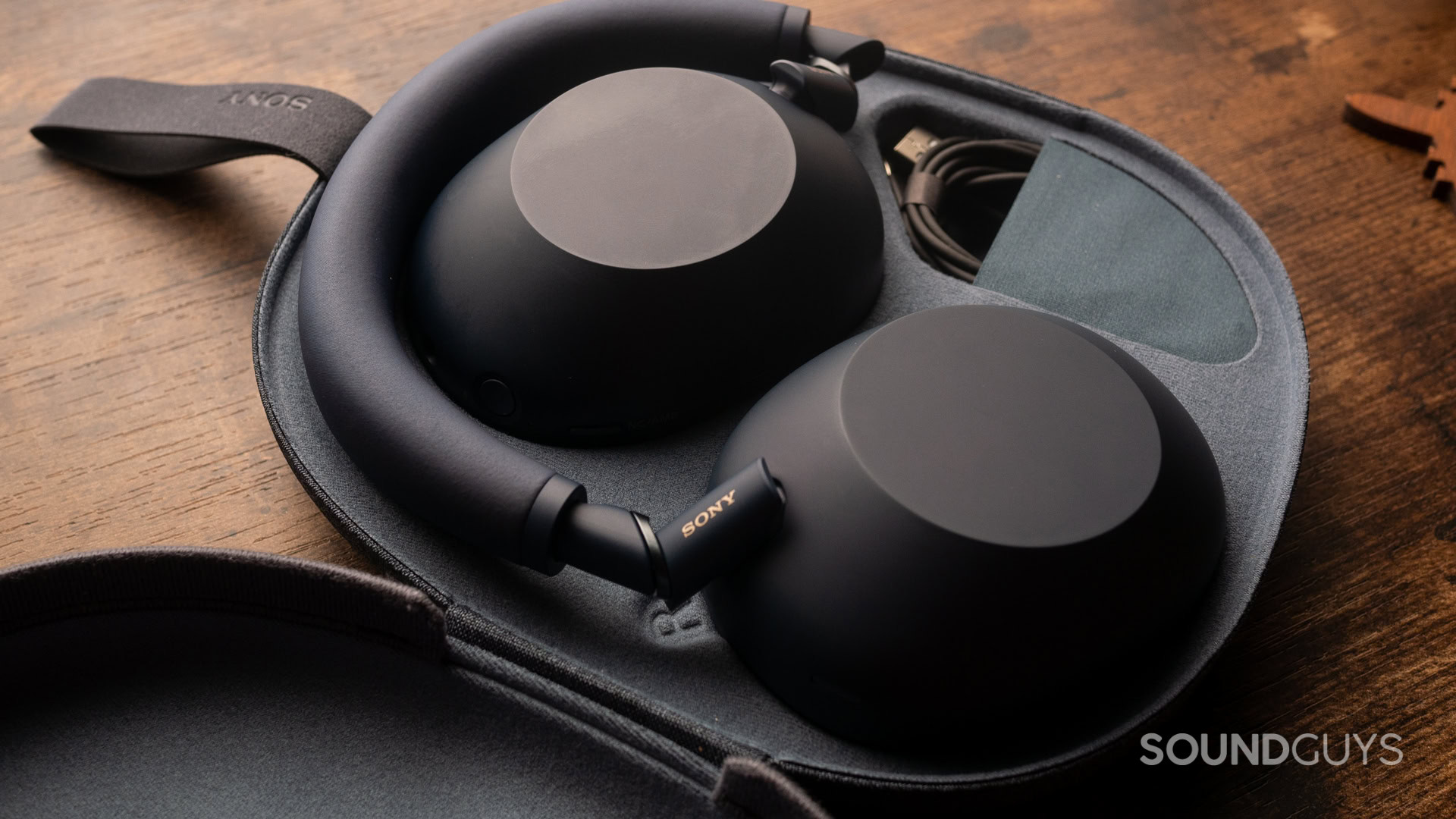
Christian Thomas / SoundGuys
The softshell case is more durable than it looks, and fairly minimalist.
Don’t plan on taking either of these products to the gym, either. As neither the Bose QuietComfort Ultra (2nd Gen.) nor Sony WH-1000XM6 have any sort of moisture resistance, you should probably keep them away from situations that are overly moist.
How do you control Bose QuietComfort Ultra (2nd Gen.)?
The Bose QuietComfort Ultra (2nd Gen.) has a capacitive volume slider, and two buttons on the headphones that control playback, calls, and assigned functions. Our review staff found this a little tough to get used to, and ended up using their smartphones more often than the on-headphone controls.
Bose QuietComfort Ultra (2nd Gen.) controls:
ActionMulti-function buttonBluetooth / Power buttonVolume stripAction
Single tap
Multi-function button
Play / pause
Bluetooth / Power button
Battery level check
Volume strip
N/A
Action
Double tap
Multi-function button
Track forward
Bluetooth / Power button
N/A
Volume strip
N/A
Action
Triple tap
Multi-function button
Track backward
Bluetooth / Power button
N/A
Volume strip
N/A
Action
Long press
Multi-function button
ANC mode change
Bluetooth / Power button
On / off
Volume strip
Shortcut (define in app)
Action
Swipe
Multi-function button
N/A
Bluetooth / Power button
N/A
Volume strip
Volume up / down
How do you control Sony WH-1000XM6?
The Sony WH-1000XM6 uses a mix of gestures and physical buttons to control playback and calls, but relies heavily on the gestures. Aside from some issues in the extreme cold, we found the experience of controlling the headphones largely frustration-free.
Sony WH-1000XM6 controls:
INPUTRight earcup surface
Double tap
Play / pause
Long press
Voice assistant
Swipe up / Down
Volume up / down
Swipe forward / back
Track forward / back
Cup hand
Passthrough mode
Does the Bose QuietComfort Ultra (2nd Gen.) or Sony WH-1000XM6 have more features?
When it comes to features, the headphones are pretty different, owing to the fact that each has a different philosophy behind its design. For example, where the Bose QuietComfort Ultra (2nd Gen.) is designed to be a product that has as little user customization as possible, the Sony WH-1000XM6 takes the opposite approach with its app. When you use the Sony WH-1000XM6 with the Sound Connect app, there’s a somewhat dizzying array of features for the headphone enthusiast and casual consumer alike, enough to make the app very difficult to navigate. The Bose QuietComfort Ultra (2nd Gen.), on the other hand, has a much more limited amount of controls in a more user-friendly layout.
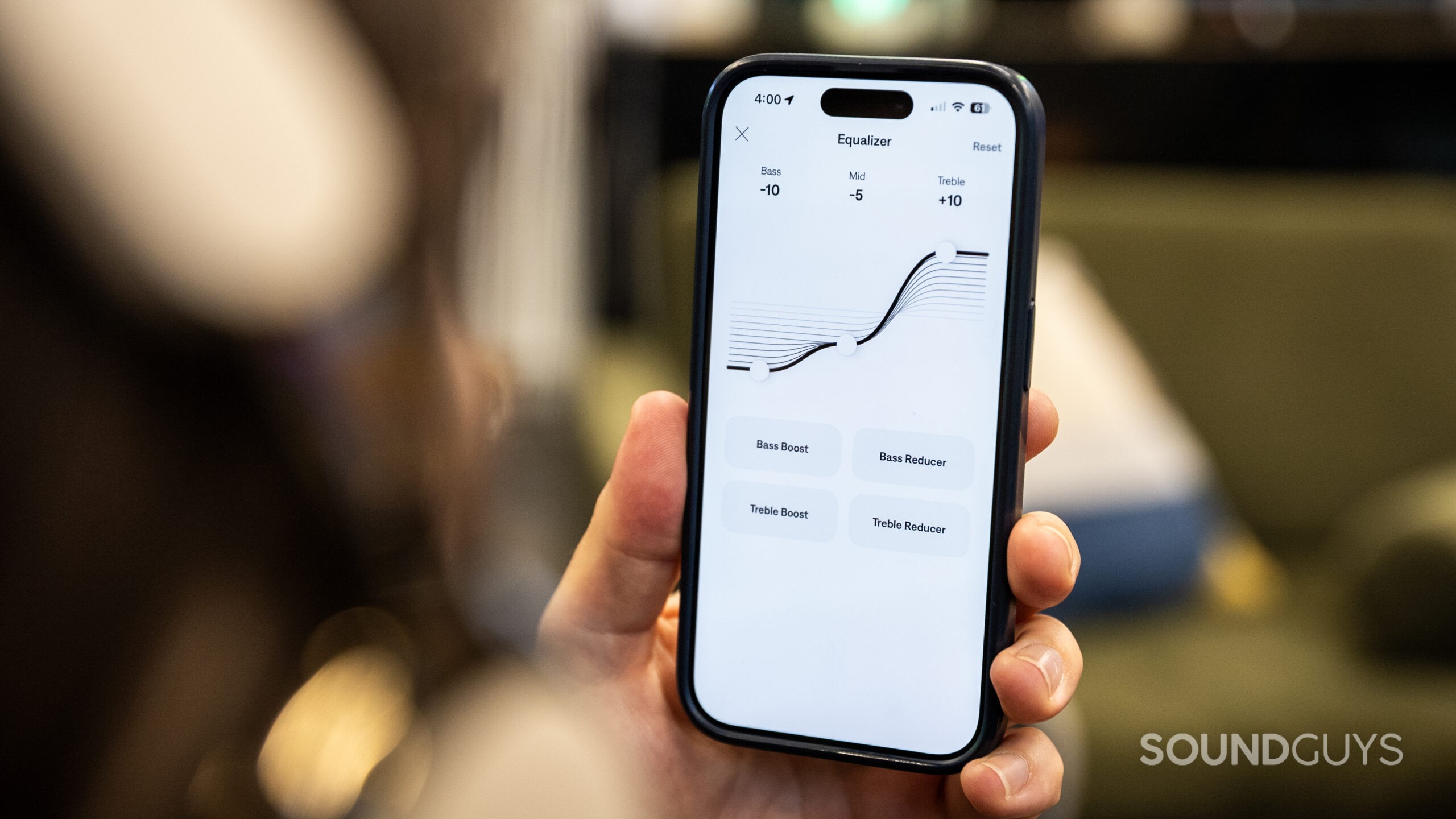
Bose’s in-app equalizer is a bit too simplistic to satisfy those looking to take control of their tuning.
Both sets of headphones have all the contemporary niceties like Find My, Multipoint, and immersive audio modes — though there are some minor points of differentiation between each model. For example, the Sony WH-1000XM6 has a much better equalizer, extensive options for sound features, and enforcing Bluetooth codecs/behavior. The Bose QuietComfort Ultra (2nd Gen.) on the other hand, focuses more on basic features that are baked into normal operation of the headphones. For example, the ActiveSense feature in transparency mode meant to prevent loud sounds from affecting you as much when you’re trying to hear your surroundings.
How does the Bose QuietComfort Ultra (2nd Gen.) and Sony WH-1000XM6 connect?
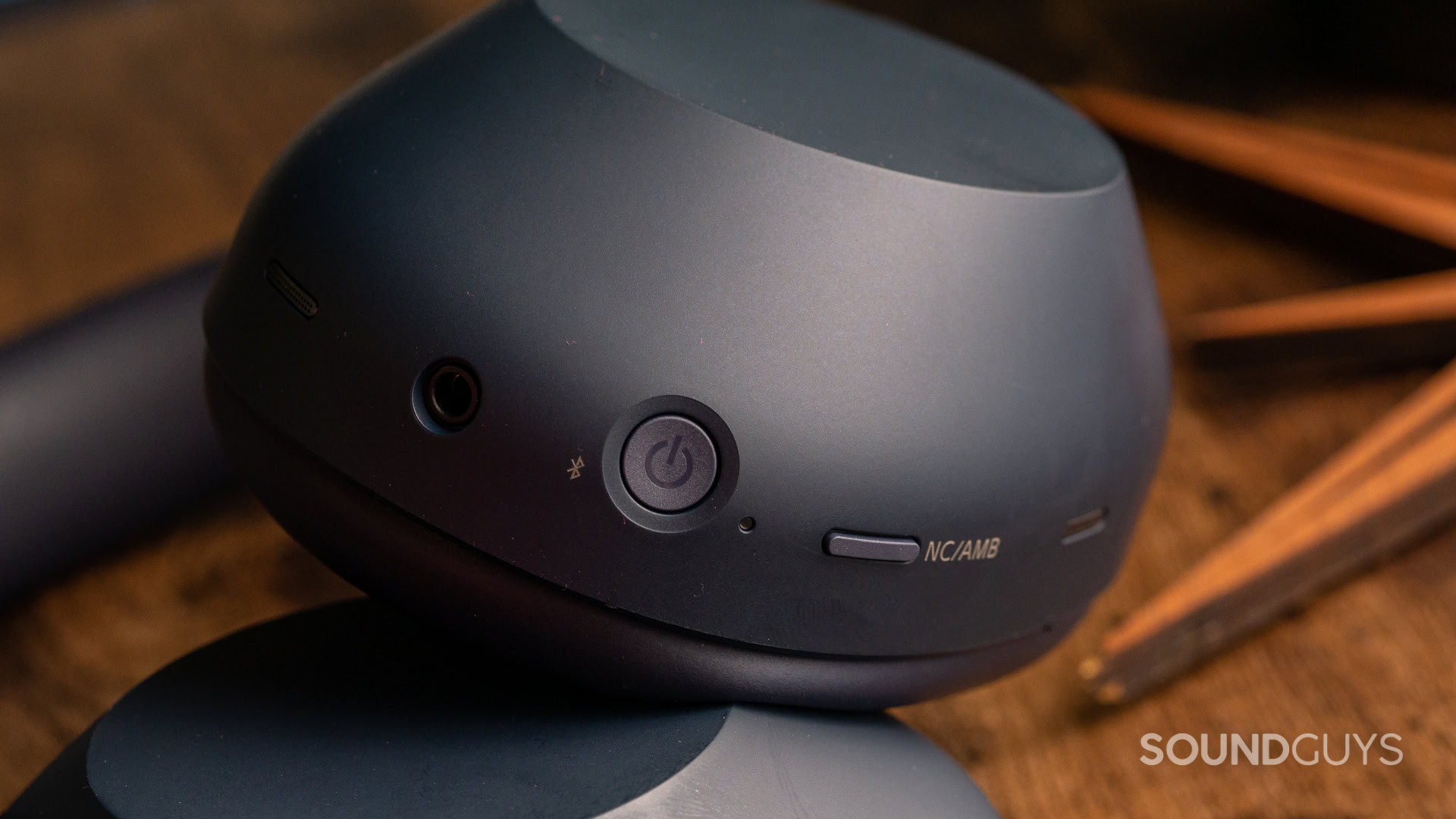
Christian Thomas / SoundGuys
As far as wired options go, the Sony only supports analog 3.5mm.
Both the Bose QuietComfort Ultra (2nd Gen.) and Sony WH-1000XM6 represent the latest-and-greatest of what each company has to offer, but each product has clear advantages over the other in different ways. Each set of headphones has the basic SBC and AAC over Bluetooth 5.4, and each offers a near-lossless codec in the form of Snapdragon Sound for the Bose QuietComfort Ultra (2nd Gen.) and LDAC for Sony WH-1000XM6. Unfortunately for Bose QuietComfort Ultra (2nd Gen.), Snapdragon Sound isn’t supported by all Android phones, so you’ll have to pay close attention to not only which processor your smartphone has (a Qualcomm 8 Gen. 3 or newer), but also whether or not the manufacturer of your device supports the feature. LDAC, on the other hand, is supported by most Android devices — added into the OS’ enforced compatibility years ago. Of the two, currently only Sony WH-1000XM6 supports Auracast, though there’s nothing stopping Bose from adding that to a product firmware update in the future.
If you’re a gamer, both the aptX Adaptive offered by the Bose QuietComfort Ultra (2nd Gen.) and the LC3 connection offered by the Sony WH-1000XM6 will enable lower-latency connections wirelessly. To shave off the most latency, however, you’ll need to use the wired options for either product.
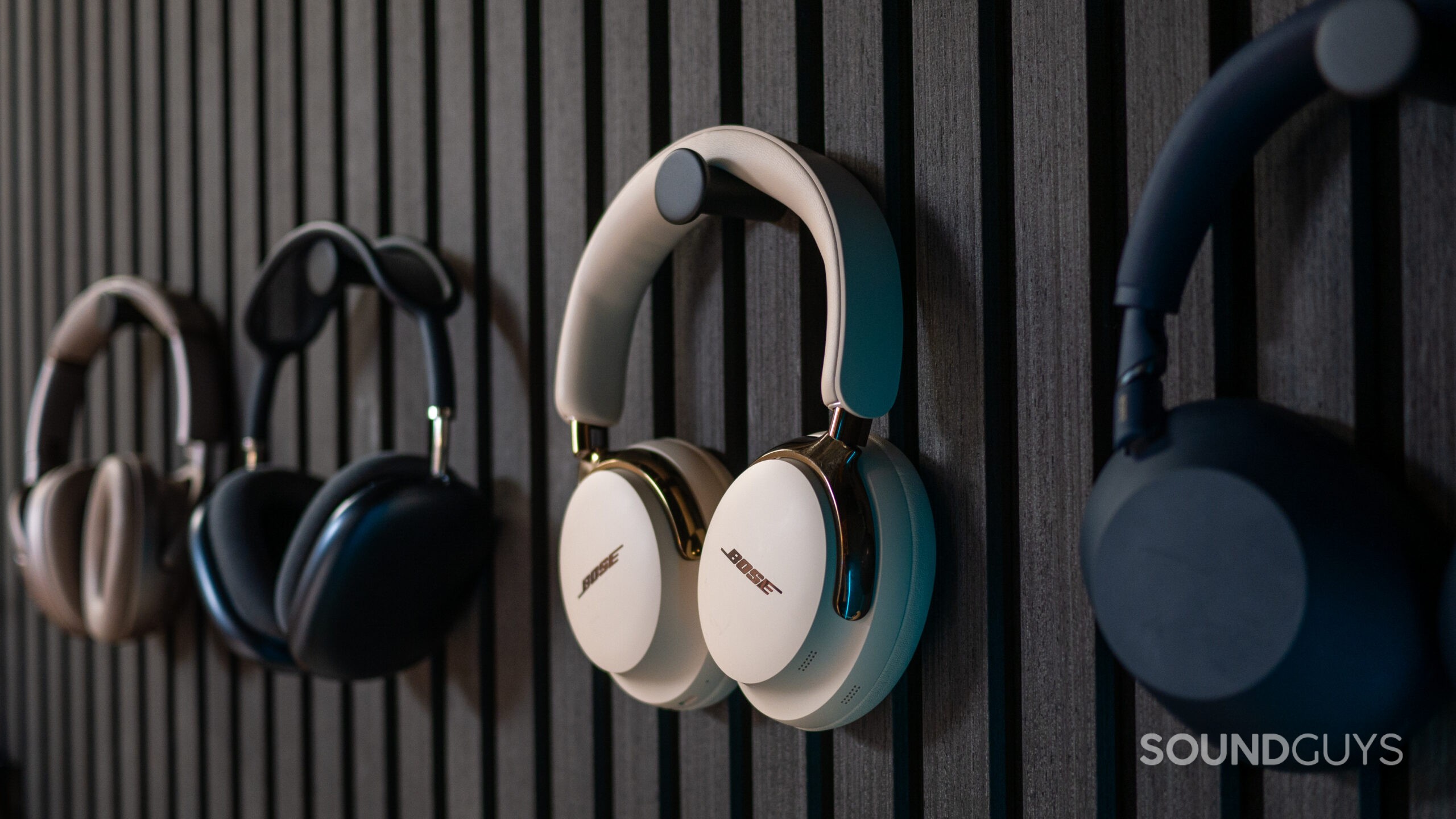
Christian Thomas / SoundGuys
The Bose QuietComfort Ultra (2nd Gen.) has very similar features and connectivity to the rest of the ANC pack.
Where the Sony WH-1000XM6 has an analog 3.5mm TRS plug, the Bose QuietComfort Ultra (2nd Gen.) offers USB-C and analog audio connection options, allowing for the headphones to plug into darn near anything. Consequently, you can use the Bose QuietComfort Ultra (2nd Gen.) for lossless audio decoding when you use your computer or smartphone as the source, which will also allow the headphones to apply their own DSP to the audio. This, in turn should ensure best results over this connection method.
Is battery life better on the Bose QuietComfort Ultra (2nd Gen.) or Sony WH-1000XM6?
In our standardized battery rundown test with ANC on, the Bose QuietComfort Ultra (2nd Gen.) lasted 37 hours and 14 minutes, where the Sony WH-1000XM6 held on for 27 hours and 12 minutes. Though this is a decisive victory for Sony here, you will not notice the difference in your day to day life. You’ll probably have to charge your headphones slightly more often, but if you take advantage of the USB-C listening while at home: this happens without any downtime.
The only downside for the Bose QuietComfort Ultra (2nd Gen.) here is that the battery of the Sony WH-1000XM6 should last a bit longer over the whole course of its life because you won’t be recharging the battery as often. If you need to swap out the battery towards the end of your headphones’ life, Sony took steps to make process less of a ruinous mess with their latest headphones. In either case, a little bit of discipline and good charging habits should keep your headphones out of the landfill for several years.
Does the Bose QuietComfort Ultra (2nd Gen.) or Sony WH-1000XM6 block noise better?
Both headphones are excellent noise cancelers, and there isn’t a clear advantage to choosing one over the other. In my subjective experience, both headsets were extremely capable of handling the destruction of airplane, train, and truck noise. Though you might see some areas where each set of headphones is better than the other in the chart above, overall this won’t translate into a noticeable difference. When ANC is off, both headphones isolate very well, too.
Does the Bose QuietComfort Ultra (2nd Gen.) sound better than the Sony WH-1000XM6?
Both the Bose QuietComfort Ultra (2nd Gen.) and Sony WH-1000XM6 are among the better options for ANC headphones, but both have their strengths and drawbacks. However, more people will like the sound of the Sony WH-1000XM6 against the sound of the Bose QuietComfort Ultra (2nd Gen.) in our estimation.
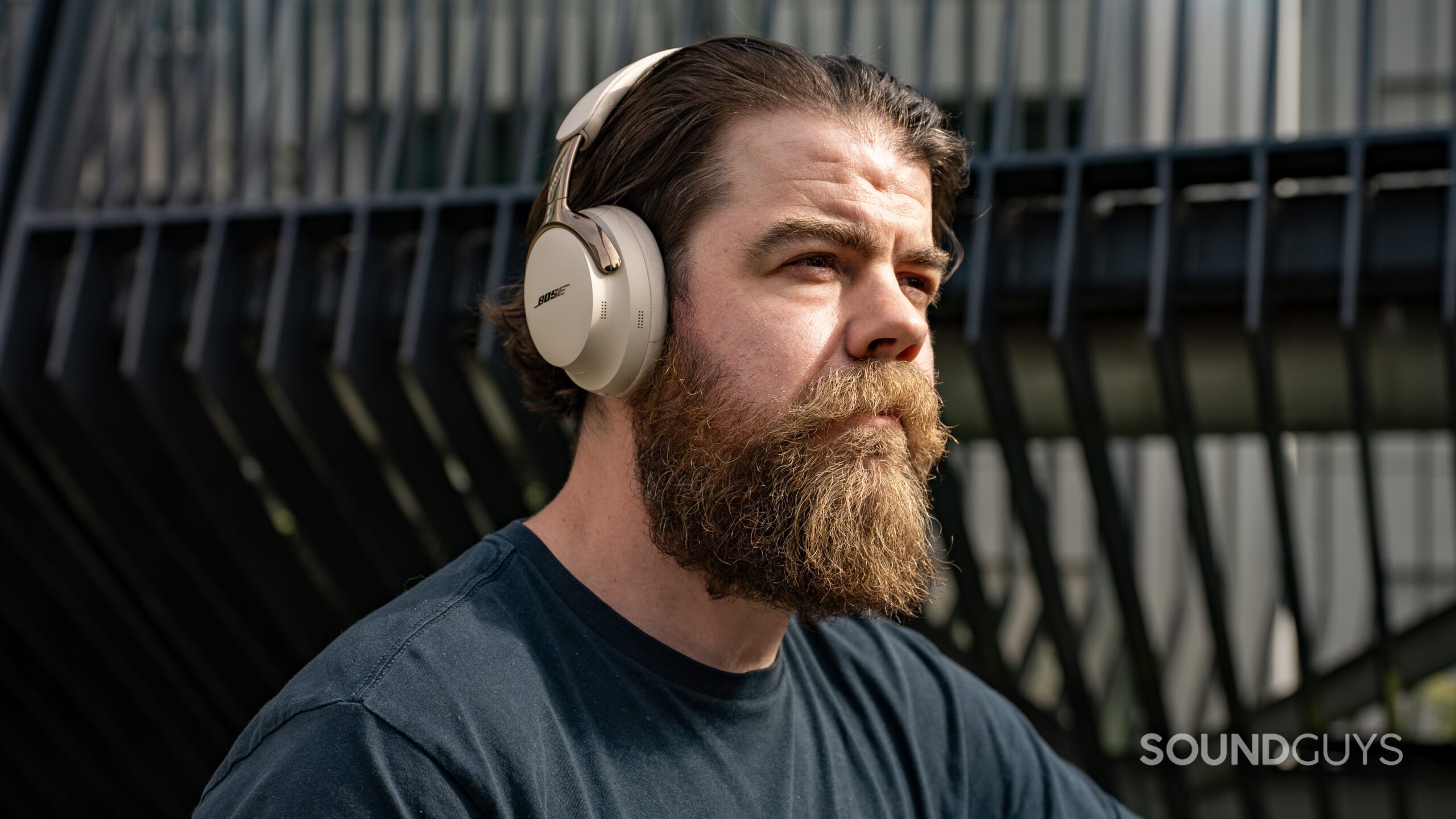
With strong ANC, you can listen pretty much anywhere without much noise ruining the experience.
Each of the headphones has the best iteration of both companies’ immersive audio modes, but where the Bose QuietComfort Ultra (2nd Gen.) looks to emulate the experience of speakers in front of you, the Sony WH-1000XM6 attempts to place you within a virtual stage where your music is being performed. Unfortunately, most won’t take advantage of that platform on the Sony WH-1000XM6 because it requires your content to be mixed for that specifically. However, the Sony WH-1000XM6 also offers virtualized sound scenes to provide the illusion that you’re listening to your music in a different kind of room than the one you’re currently in. For example, a cafe, or outside.
Where the Bose QuietComfort Ultra (2nd Gen.) falls flat is the equalizer. Where the Sony WH-1000XM6 has a 10-band EQ through the Sound Connect app, the Bose QuietComfort Ultra (2nd Gen.) has a 3-band EQ via the Bose app. If you want to customize your sound, you’re going to need to make peace with only broad adjustments.
Multi-Dimensional Audio Quality Scores (MDAQS)
Hold up! Something’s missing
The Multi-Dimensional Audio Quality Scores for the Bose QuietComfort Ultra (2nd Gen.) and Sony WH-1000XM6 are not directly comparable due to a version difference between each reading. We’re still crunching the numbers on all of our previous samples to rectify this inconsistency, and should have final figures soon. While we know this is disappointing, we want to validate our dataset before publishing incorrect figures.
What do the Multi-Dimensional Audio Quality Scores mean?
Timbre (MOS-T) represents how faithfully the headphones reproduce the frequency spectrum and temporal resolution (timing information).
Distortion (MOS-D) represents non-linearities and added noise: higher scores mean cleaner reproduction.
Immersiveness (MOS-I) represents perceived source width and positioning: how well virtual sound sources are defined in three-dimensional space.
Objective Measurements
Both the Bose QuietComfort Ultra (2nd Gen.) and Sony WH-1000XM6 offer a consumer-friendly sound with emphasized bass and treble, but each differs slightly in performance in certain areas. Neither really follow our Headphone Preference Curve too closely, but for most people that’s not an issue. For example, the Bose QuietComfort Ultra (2nd Gen.) tends to have a more even — albeit highly emphasized — response in the highs, while the Sony WH-1000XM6 has a very odd response above 3kHz. While this doesn’t mean your preferences will necessarily lie with one or the other, many issues you find with the Sony WH-1000XM6 can be addressed with equalizing the output through the Sound Connect app. However, the Bose QuietComfort Ultra (2nd Gen.) is not able to address granular areas of concern.
There is, however, one issue that can’t be resolved on the Sony WH-1000XM6, and that’s the 10kHz spike. Unfortunately, there is nothing you can do in the equalizer to bring this over-emphasis down, nor raise the surrounding bands to ameliorate this issue. It’s possible that an update to Sound Connect to fix this in the future, but as of October 2025, it doesn’t exist yet. Sony does have a track record of fixing issues over time, so there is hope for the Sony WH-1000XM6 to improve in this performance metric.
It’s possible that because the Bose QuietComfort Ultra (2nd Gen.) uses a proprietary technology to calibrate its headphones to any given set of ears, that your impressions will vary from our measurements. We noticed in the lab that results could vary quite a lot from seating to seating (and unit to unit). However, the overall impression of the sound changed less on a human than a test fixture. Consequently, we would prefer it if you tried each of these products out for yourself first before making a value judgment on squiggly lines alone.
Does the Bose QuietComfort Ultra (2nd Gen..) or the Sony WH-1000XM6 have a better microphone?
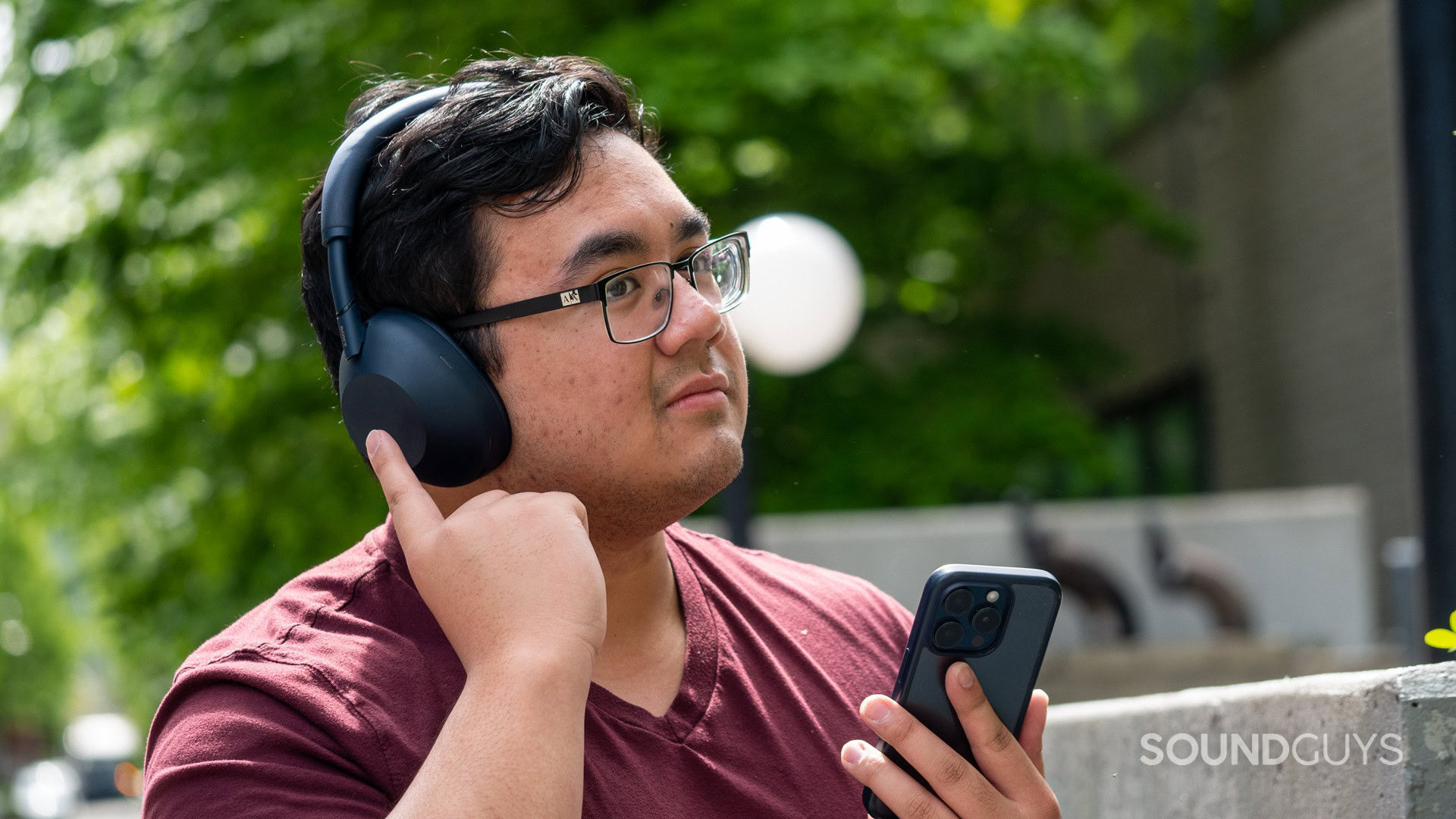
Christian Thomas / SoundGuys
The Sony-WH-1000XM6 sounds decent on phone calls, if lab tests are to be believed.
Rather than give you a personal assessment on each product’s microphone quality, I’d rather give you the opportunity to hear for yourself. Below are samples collected in our labs, meant to be directly comparable. Please vote in the poll below to offer your impressions as well, because it helps our other readers understand how the rest of the world interprets each model’s performance. Keep in mind that your experience with these microphones in your daily life may vary quite a bit based on external factors.
Bose QuietComfort Ultra (2nd Gen.) microphone demo (Ideal conditions):
Sony WH-1000XM6 microphone demo (Ideal conditions):
Bose QuietComfort Ultra (2nd Gen.) microphone demo (Windy conditions):
Sony WH-1000XM6 microphone demo (Windy conditions):
Which samples sound better to you?
0 votes
Bose QuietComfort Ultra 2nd Gen
NaN%
Sony WH-1000XM6
NaN%
The samples sound nearly as good as each other
NaN%
Bose QuietComfort Ultra (2nd Gen.) vs Sony WH-1000XM6: Price and availability
Interestingly enough, both the Bose QuietComfort Ultra (2nd Gen.) and Sony WH-1000XM6 debuted at virtually the same price of $449.99. As both products are the flagship offering from their respective companies, you should have no trouble finding either in big box stores, airport vending machines, or wherever headphones are sold.
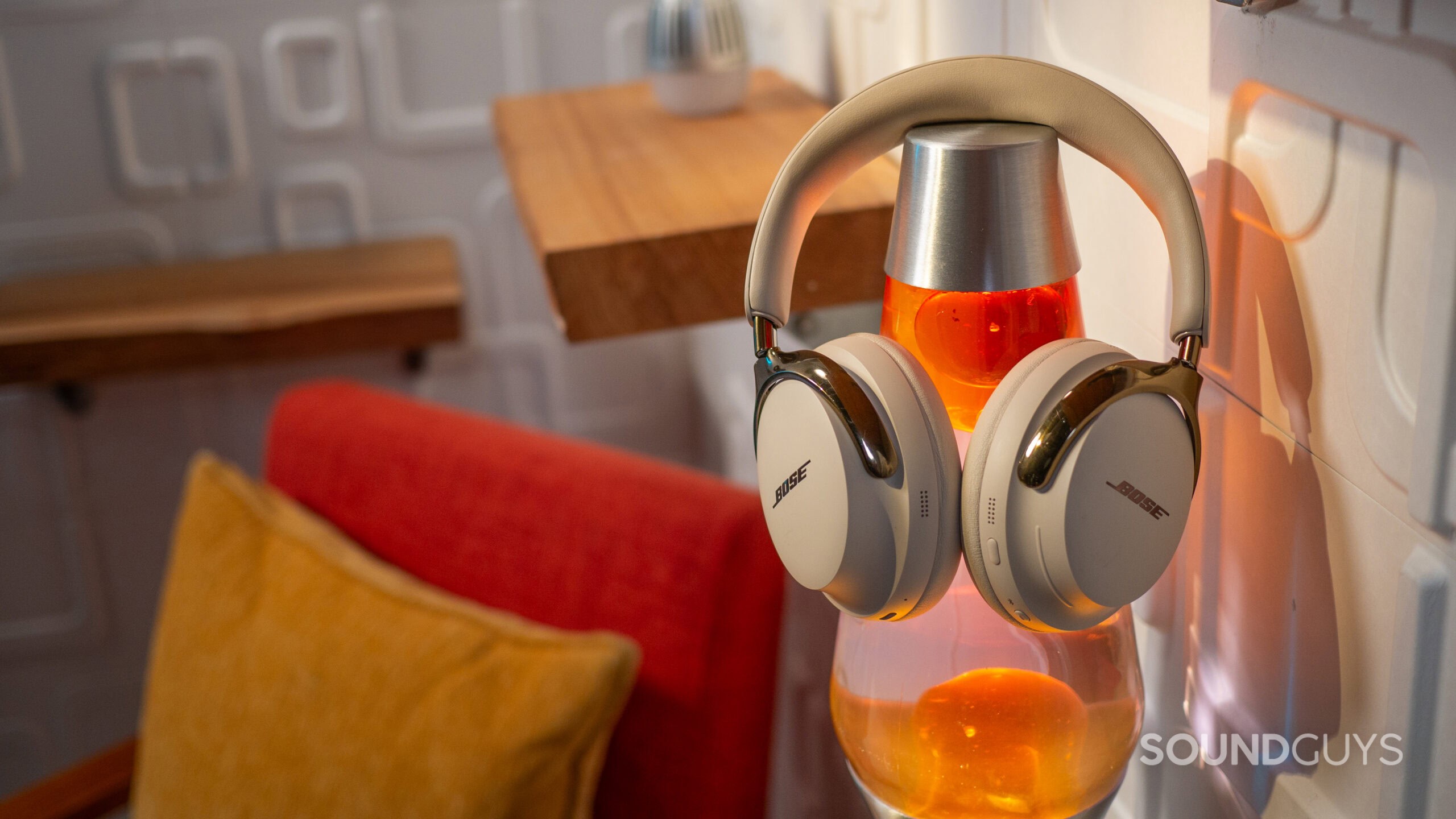
Christian Thomas / SoundGuys
Bose might be an older company, but they know what they’re doing.
That said, it’s not inconceivable that either product will go on sale in the coming months, altering this calculus somewhat. Should either set of headphones go on sale, the cost alone is enough to make the decision for most people. Most should be happy with either, unless you really need to conserve your cash or wait to make a decision that will meet your needs a little more directly. But both headphones offer top-notch ANC, good comfort, and some of the best Bluetooth has to offer in headphones. Which is good, given how expensive they are.
Should you get the Bose QuietComfort Ultra (2nd Gen.) or Sony WH-1000XM6?
If you’re still on the fence — or just skipping down here to avoid all that nerd stuff — here’s how you should approach your decision making between whether you should buy the Bose QuietComfort Ultra (2nd Gen.) or Sony WH-1000XM6 over the other one.
Choose the Bose QuietComfort Ultra (2nd Gen.) if:
You want to listen to music over USB-C audio.
You don’t much care for tinkering with the EQ.
You have an Android phone that supports Snapdragon Sound.
You wear glasses.
Choose the Sony WH-1000XM6 if:
You don’t wear glasses.
You have an Android phone that does not support Snapdragon Sound (or an iPhone).
You like to tinker with your headphones.
You value battery life over other concerns.
Thank you for being part of our community. Read our Comment Policy before posting.

